Can 'Han Solo' Hack the San Bernardino Phone?
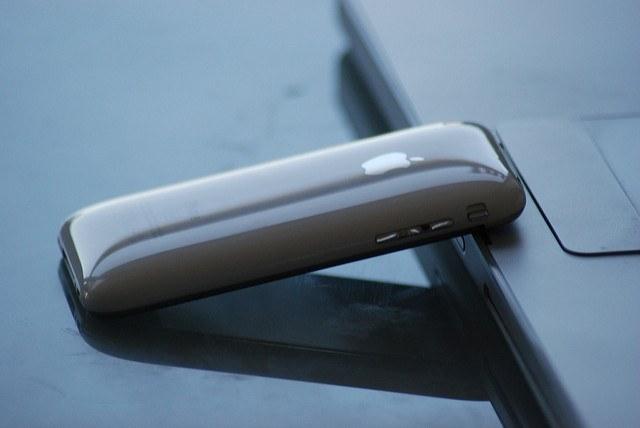

The battle between free data access and personal security, which has been raging quietly in the background for years, grabbed headlines this week, around the iPhone belonging to San Bernardino shooter Syed Rizwan Farook.
Investigators have the phone, but they have not been able to access internal data. Each iPhone contains sophisticated encryption technology specifically for privacy protection. The FBI, claiming that it has not been able to access data on the phone due to this encryption, asked for Apple’s help unlocking the phone. Information on the phone could help investigators learn more about the shooters and their contacts, the FBI says.
Apple CEO Tim Cook has held firm in his insistence that maintaining the privacy of Apple’s customers must be his top priority. He therefore refused to help the government. In a statement sent to customers, Apple said: “The United States government has demanded that Apple take an unprecedented step which threatens the security of our customers. We oppose this order, which has implications far beyond the legal case at hand.”
The company goes on to say that it will do everything it can to help with the investigation, short of building a “backdoor” into the phone.
“When the FBI has requested data that’s in our possession, we have provided it. Apple complies with valid subpoenas and search warrants, as we have in the San Bernardino case. We have also made Apple engineers available to advise the FBI, and we’ve offered our best ideas on a number of investigative options at their disposal," Apple said in its statement."We have great respect for the professionals at the FBI, and we believe their intentions are good. Up to this point, we have done everything that is both within our power and within the law to help them. But now the U.S. government has asked us for something we simply do not have, and something we consider too dangerous to create. They have asked us to build a backdoor to the iPhone.”
Doing so, argues the company, would ultimately do more harm than good, exposing millions of iPhone users to the prying eyes of hackers and thieves. It would also, says the statement, set a “dangerous precedent.”
This is, to be sure, a gnarly subject, and while some feel that Apple should cooperate more fully -- especially given the possibility that the shooters could have been part of a larger network -- others feel that privacy should be paramount.
According to a recent survey by Pew Research, 47 percent of iPhone owners say that Apple should unlock the phone, while 43 percent feel it shouldn’t. It’s a small majority, which gets larger when you move away from iPhone users.
Could there be a third option to break this apparent deadlock?
Enter John McAfee, swaggering in like the Han Solo of the cyber world: the renegade, the outlaw, who can get the job done even if it means bending a few of the rules. McAfee steps boldly up to the plate in an editorial on Business Insider, to make the following claim:
“With all due respect to Tim Cook and Apple, I work with a team of the best hackers on the planet. These hackers attend Defcon in Las Vegas, and they are legends in their local hacking groups, such as HackMiami. They are all prodigies, with talents that defy normal human comprehension. About 75 percent are social engineers. The remainder are hardcore coders. I would eat my shoe on the Neil Cavuto show if we could not break the encryption on the San Bernardino phone. This is a pure and simple fact.”
Who is this team of elite crackerjacks, and why are they not already on the job? To hear McAfee describe them, they are about as out-of-the-mainstream as anything you’re likely to find this side of Mos Eisley cantina.
“And why do the best hackers on the planet not work for the FBI? Because the FBI will not hire anyone with a 24-inch purple mohawk, 10-gauge ear piercings, and a tattooed face who demands to smoke weed while working and won't work for less than a half-million dollars a year. But you bet your ass that the Chinese and Russians are hiring similar people with similar demands and have been for many years. It's why we are decades behind in the cyber race.”
No word yet on whether this crack team has been given a shot at this, but it sounds to me like it might just be the best option the FBI has if it wants to gain access to the encrypted data.
Image credit: Flickr/George Panos
Scientists Pressure American Geophysical Union to Sever Ties with ExxonMobil
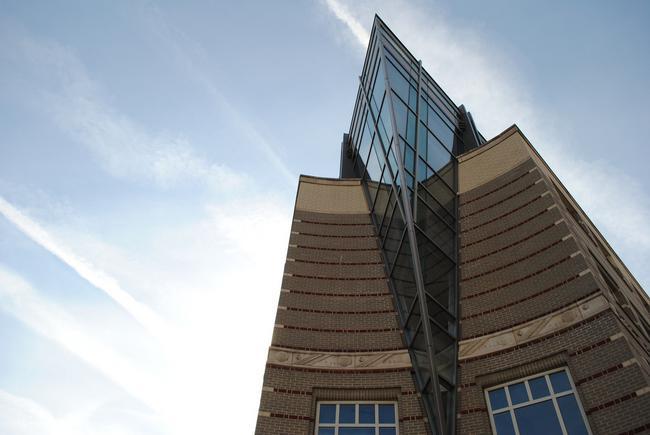

The American Geophysical Union (AGU) is almost 100 years old and has long been a leader when it comes to the organization and distribution of scientific research related to geophysics.
And like any trade or advocacy organization, the AGU has a huge conference that brings out the best and the brightest for events centered around the latest trends in the field. Last year’s AGU Fall Meeting, in fact, boasted over 24,000 attendees, and there is no reason to think that this December’s gathering in San Francisco will not be an even larger event.
One of this event’s -- and the AGU’s — sponsors over the years has been ExxonMobil. For an organization that holds several core values, including “the generation and dissemination of scientific knowledge,” as well as “unselfish cooperation in research,” the AGU’s acceptance of checks from ExxonMobil would surely rankle some of the union's membership. Many AGU members and their research have been savaged by the oil giant’s allies in business and government.
America’s largest energy company, ExxonMobil leads the way when it comes to climate change denial, and has been quick to nix any such discussion amongst its shareholders. So, it is easy to understand why more than a few eyebrows would be raised over the relationship between these two organizations.
To that end, over 100 geoscientists sent a letter to the AGU’s president, Margaret Leinen, and asked that she and the governing board end ExxonMobil’s sponsorship of the organization -- and more just have signed on.
The letter outlines a long list of grievances: the company’s continued support of the lobbying group ALEC; the public criticism ExxonMobil’s CEO, Rex Tillerson, has lobbed against the validity of climate change models; and the energy giant’s impact on the debate over climate change policy within the U.S. Congress.
In response, the AGU promised to “carefully review the information” and consult with the organization’s stakeholders before its next board meeting. To its credit, the AGU welcomes comments as well as emails over the controversy. So far (and in fairness, this is a small sample size), the sentiment is tilted toward severing the relationship between the two organizations.
This is not the first time the AGU has had its relationship with ExxonMobil questioned: Last year, the Union of Concerned Scientists, long a vocal critic of ExxonMobil, submitted a letter that questioned the association and asked AGU to reconsider its acceptance of sponsorship money. At the time the AGU’s board claimed that, after conducting some research, it decided that ExxonMobil’s public statements and activities “were not inconsistent” with the organization’s positions and scientific consensus, and the union has continued to receive sponsorship money from the company.
Indeed, when perusing through AGU’s site, one would hardly assume that it has been adversely influenced by ExxonMobil’s public stance on climate change. Recent posts include how Dubai’s boom has affected the local climate, the slow disappearance of a glacier in Wyoming and copious other articles related to climate change. The AGU is far from a mouthpiece for the $269 billion oil and gas company.
Nevertheless, as the scientists’ letter outlines, the AGU’s policy states that “AGU will not accept funding from organizational partners that promote and/or disseminate misinformation of science, or that fund organizations that publicly promote misinformation of science.” Considering the massive ExxonMobil sign that greets attendees at the organization’s annual conference, that visual -- at the very least -- comes across as awkward.
Don’t expect this spat to die anytime soon. ExxonMobil and its allies are out in full force, alleging that some signatories of this letter have benefited from the company’s cash in the past as they conducted their own research. But of course, people can change their views and companies can change their policies. ExxonMobil may be winning this public-relations battle now, but market realities are showing that it's losing the long-term war. Despite the fracking boom here at home and the low prices of oil worldwide, renewables are booming in the U.S. while more corporations are investing in clean energy.
Image credit: SERC Media
Stockholm Wants To Ditch Fossil Fuels By 2050


Stockholm may not be the city that comes to mind when you think of going fossil fuel-free by 2050. But that is the Swedish capital’s goal. “The city is well on the way to achieving its goal,” proclaims Stockholm’s action plan called Vision 2030.
Formed in 2007, the Vision 2030 plan outlines the city’s goals, one of which is to be the green capital of the world by 2030. Meanwhile, Stockholm’s population keeps growing. In 2008, the population of the city hit 808,600 residents, and it's expected to be 1 million by 2030.
That means that, with a population forecasted to be over 200,000 more than today, Stockholm still expects to be the world’s green capital. Or as Vision 2030 declares, “The region’s population increase has had little or no effect on the local environment, making Stockholm an international role model.”
Clean transportation and energy must expand
What is Stockholm doing to achieve its environmental goals? The simple answer is plenty. Transportation is a key element of the city’s plans. Many Stockholm residents drive what Vision 2030 describes as “clean vehicles,” which includes hybrid and electric cars.The city’s increasing embrace of clean vehicles coincides with Sweden’s goal of having a fossil fuel-free vehicle fleet by 2030. In 2014, 12 percent of Sweden’s vehicle fleet was fossil-free. Alternative fuels will likely play a part in Sweden reaching that goal as the country is pumping money into research and development, including $1.5 million in ethanol.
The city has already reduced emissions with “smart traffic solutions and information technology,” Vision 2030 states. One of those solutions is a congestion tax. Driving into Stockholm’s center during rush hours means paying about $4, Public Radio International reports. Residents who drive past a control point are automatically registered and a bill is sent to the vehicle’s owner. Introduced in 2007, the congestion tax reduced traffic by 20 percent from 2005 levels even though the city’s population is increasing.
Many residents of Stockholm use public transportation. But the capacity will need to be increased if the city is to cope with the 350,000 new journeys the predicted population increase will create, according to the Roadmap for a Fossil Fuel Free Stockholm 2050. And public transportation will have to be clean. Already, trains in Stockholm are running on electricity that is produced mostly from fossil fuel-free sources (hydro-power, nuclear and wind).
Energy needs will have to be met from fossil-fuel free sources, and that means phasing out fossil fuels. Coal from a plant near Stockholm is one source that is used for heating and electricity. The energy company, Fortum Värme, is “striving to gradually replace the coal with biofuels,” the Roadmap for a Fossil Fuel Free Stockholm states. The Roadmap estimates that the coal plant will be decommissioned by 2050.
Although oil for heating is used only in a limited capacity, it will also need to be phased out. About 600 multi-occupancy dwellings and few thousand single-occupancy dwellings now get their heat from oil-fired boilers, according to the Roadmap's estimates. Over the past 20 years a good portion of the heating oil has been phased out, and it is estimated that it will “probably be phased out by 2050.” Gas is another fossil fuel that is used in a limited capacity as energy in boilers. Biogas can be used to replace gas, which necessitates a big expansion of biogas production.
Stockholm, and Sweden in general, serve as models for the world. Sweden, the first country to pass an environmental protection act, reached its 2020 goal of 50 percent renewable energy use in 2012. As Stockholm and Sweden meet their environmental goals, they set an example for other cities and countries to follow.
Image credit: Flickr/Thomas Fabian
Should EV Investments Absolve Volkswagen of Diesel Cheating?
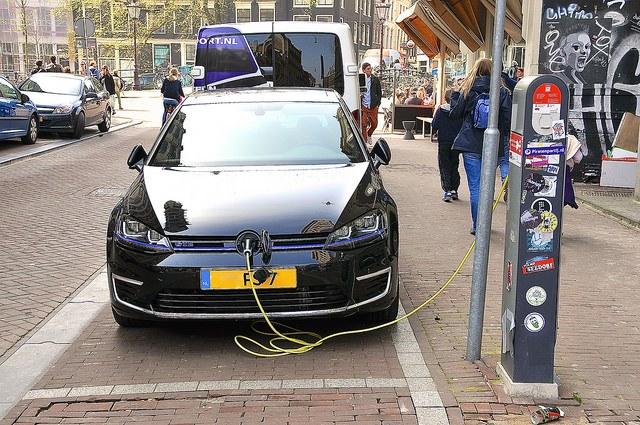

Volkswagen is still struggling to move past the emissions-software scandal that has plagued its reputation for the better part of a year. Ever since the news officially broke that an array of its diesel passenger cars were outfitted with deceptive software, VW's reputation has been pretty much at bottom ratings.
It's not like the company hasn't tried to regain public trust: To disgruntled consumers who bought one of the affected cars, it's offered a combo of Visa cards and credit at dealerships. To dealers stuck with stock frozen by the publicity, the company offered to buy back used vehicles at full price. And in response to hundreds of class-action suits coming up on the horizon, the company recently suggested that it may be willing to buy back those vehicles that can't be fixed. Fixing, VW lawyer Robert Giuffra explained in court in January, requires coming up with new software, and that may still be a long way off -- too long for some earlier vehicles caught in the debacle.
"The question ... is one of timing," Guiffra stated in the court hearing.
The idea of buying back cars wasn't new. It was initially proposed to the Environmental Protection Agency and the California Air Resource Board in early January, but was turned down by CARB. It wasn't embraced by the EPA, either, which said that the litigation and hefty federal and state fines that were levied against the company was all part of "bringing VW to justice." What that process would entail, however, the EPA didn't say.
But according to a recent story from Reuters (which quoted the German publication, Welt am Sonntag), the EPA may be finally closing in on a deal. And no, it doesn't appear to include more fines. If anything, it's evidence that the EPA may have its ear close to industry sources and is willing to strike a deal that could conceivably benefit both the U.S. auto industry and the administration's ongoing effort to control carbon emissions on the road.
The idea (which neither the EPA or VW is willing to confirm yet), is that Volkswagen would ramp up its production of electric vehicles and make its Chattanooga, Tennessee, plant a possible hub for EV production. The company would also help create a suitable network of charging stations across the country -- a win-win addition for a company that has the resources to build EV vehicles.
Pressed for information, a VW spokesperson would only say, "Talks with the EPA are ongoing and we are not commenting on the contents and state of the negotiations."
The concept, sketchy as it is at this point, has some interesting similarities to a suggestion that Elon Musk made last year when environmental agencies were initially negotiating with VW. Musk and his associates -- a lengthy list of tech and environmental experts -- suggested a multi-step process that could entice/require VW to apply its considerable talents toward coming up with a truly emissions-free vehicle -- one that changes the automotive map. And, in recognition of the fact that a significant share of the emissions-cheating vehicles were purchased in California, (where VW has wracked up state violations), that the company be required to build factories to enhance California's auto industry.
While it's encouraging to think that the EPA may actually consider proposals that don't just amount to more fines, will handing VW an incentive to ramp up its EV stock really solve problems?
Studies have shown that while electric vehicles are a far sight better for carbon emissions, they aren't the end-all when it comes to resolving our environmental problems. And having a "grid" of electric charging stations (something the U.S. needs) would help, but their green legacy goes only so far as the local electric network's source.
"Grid-powered electric cars have carbon emissions four times greater in countries with coal-dominated power generation than in those with low-carbon power supplies," says the environmental research group Shrink that Footprint in its report, Shades of Green: Electric Car Emissions Around the Globe.
While many U.S. cities are converting to greener power generation, the overall environmental efficiency of EVs depend not on the vehicle but on how that power is generated in each state. These days, Tennessee ships its coal to other states rather than using it to provide most of its own electricity. But when it comes to "zero emissions," Tennessee's coal production, and sale to other states, can't help but undercut those accomplishments of EVs.
Which brings us to VW, a company that has for years touted the concept of breaking the mold in its business approaches. Say what you may about the company's diesel scandal, VW's yearning to move outside of the norm and to be recognized for that is part of what brought about the first LEED-certified automotive plant in the U.S., innovations in water conservation in the Chattanooga plant and, most importantly, its ability to help rewrite Tennessee's education certification processes for auto industry professionals.
Offering VW the option to invest more heavily in the EV industry and network seems to be missing the point when it comes to innovation and falling short in our aspirations to move the environmental mark for today's automotive industry.
Image: FaceMePLS/Flickr
Bike Company Launches to Help the Homeless and Developing Countries


When Pedal Forward was founded in 2012, “the original idea was to build a bicycle,” said co-founder Matt Wilkins. Being an engineer, naturally his main interest was to build something.
But then, noticing the burgeoning “one-for-one” business model of companies like Toms shoes -- whereby the company donates a pair of shoes in a developing country for every pair sold at home -- Pedal Forward quickly became inspired to provide a similar social value as well.
Today, with the recent completion of a successful Kickstarter campaign, Pedal Forward is ready to start production of its U.S.-built bamboo bicycle. And while the company realized the one-for-one model was not the way to go for its business, far from abandoning its social value proposition, its founders instead devised a model that will help disadvantaged communities both here at home as well as abroad.
Wilkins explained to me that Pedal Forward has both a short-term and long-term vision. Firstly, choosing bamboo as a material was not a gimmick, but a carefully considered choice based on the fact that the plant can be grown pretty much anywhere in the world, while having ideal properties, such as strength and weight, making it an ideal frame-building material. Furthermore, the choice of material was made with an eye on future expansion of manufacturing into developing countries.
Initially, though, the bikes will be built in the U.S., and Pedal Forward has partnered with Back On My Feet in New York -- an organization that helps homeless people reboot their lives. The company will employ labor obtained via this organization to build its bicycles, thereby helping homeless people start to earn an income and improve their lives here in the U.S. At the outset, all bikes will be sold in the domestic U.S. market.
Though initially the Pedal Forward team thought they also wanted to donate a bike overseas for every bike sold in America, they soon realized there were too many hurdles with this one-for-one model. Firstly, shipping bikes would be too expensive, which would result in a significant monetary loss, and secondly, even if that were feasible, they realized there would be unintended consequences: shipping bikes would disrupt the local markets in those developing countries and potentially hurt the livelihoods of existing independent bike dealers; not what they were looking for!
So, instead, for every bicycle sold, Pedal Forward will retain 10 percent of each sale in the U.S., and by working with organizations in Tanzania and Uganda, will use that withholding to help fund bicycles for individuals who have no access to transportation.
Pedal Forward is working with existing organizations in these countries: the Tumaini Fund, and Bicycles Against Poverty, both of which have established bike distribution models but have to contend with the ongoing hurdle of funding. Wilkins told me that, via these organizations, aid will go to high-performing students in Tanzania, while in Uganda, the funding will help provide transportation to local entrepreneurial farmers.
In the long term, Pedal Forward hopes to grow and expand into other developing countries and hopefully, at some point, reach the stage where its bamboo bikes can be literally “locally grown” in the markets in which they serve, and be sold through those independent bike dealers the team didn’t want to disrupt. The company envisions in the future that it will still retain a percentage of sales to help subsidize locally-built bikes to make them price-competitive with mass-produced and cheap bikes from China and India.
Reaching the future goal is some way off from now though. In the short term, Pedal Forward, which is a registered benefit corporation, will fulfill its initial orders from the Kickstarter campaign by June of this year. By the end of the year, the team hopes to be produce 100 bikes per month.
Image used courtesy of Pedal Forward
EC announces European Social Innovation Competition with €50,000 prizes for best ideas


The European Commission has announced the 2016 edition of the European Social Innovation Competition. This year’s theme is ‘integrated futures,‘ and the EC is requesting ‘creative approaches that realize the potential of refugees and migrants, enabling them to contribute to the social, economic, cultural and political life of their host countries.’
Building on the significant grassroots response to the recent arrival of over a million refugees and migrants to Europe, the 2016 Competition aims to tap into the creativity of Europeans to come up with new ideas to foster integration through a bottom-up, citizen-led approach.
The Competition hopes to receive innovations in products, technologies, services and models that support the integration of refugees and migrants.
The Competition is open to individuals, groups and organisations across the European Union and in countries participating in the European Horizon 2020 programme. Applications that are led by or have been co-created with refugees and migrants are particularly encouraged.
The Competition will help the most innovative ideas to turn into real projects and achieve sustainable impact. Thirty of the most promising applications will be chosen as semi-finalists and will be invited to a social innovation mentoring academy in Berlin in July to progress their ideas.
The three best projects will each be awarded with a prize of €50,000 at the awards ceremony to take place in Brussels in October 2016.
Applications are open until Friday 8 April 2016.
The competition is organised by the European Commission, supported by Nesta, Kennisland,Shipyard, Impact Hub and Matter&Co.
For full details please visit: http://ec.europa.eu/growth/social-innovation-competition
For questions about applications please contact: [email protected].
Follow on Twitter: @EUSocialInnov #diogochallenge
Chevy Volt Blazes Trail For Upcoming All-Electric Bolt
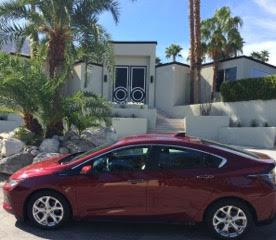

When the Chevrolet Volt is running on electricity, it is a world-class car. When the batteries are exhausted and the car shifts to its gasoline engine, there is a sense of disappointment. Not that the Volt is a disappointing car while running on gasoline. But rather, the Volt is so smooth, quiet and quick in electric mode that as a driver you feel like you are taking a step back when it is running on its gasoline engine.
This last article in this four-part series on my experiences test-driving the Volt looks toward the future of electric cars. History may look back at the Volt like we do 20th-century Apple products. Those Apple products were cool at the time, but when the iPhone arrived it made everything from computers to tablets appear constrained by a lack of mobility. That may be the next step for the Volt with the anticipated launch of Chevy’s all-electric Bolt with a 200-mile range priced at less than $30,000 after tax incentives.
Driving to Palm Desert in the Volt
Palm Desert/Palm Springs in the winter may be one of the world’s most beautiful locations. I drove the approximately 90 miles over the mountains from San Diego to Palm Desert to test the Volt on a round-trip of over 200 miles.
Palm Desert is a valley filled with stunning palm trees, vibrant flowers and abundant succulent landscapes. Palm Springs adjoins Palms Desert. A tourist would have a hard time figuring out where one town begins and the other ends.
Here is a two-minute video of my experience driving the Volt into Palm Desert:
https://www.youtube.com/embed/TXgzg6AaGfk
A major Palm Springs tourist attraction is its colony of mid-century modern homes. A fun activity is to buy a map of the town’s most famous mid-century modern homes, including Frank Sinatra's, at the Palm Springs Tourist Center and then do a self-driving tour. Do it on a Saturday and you can visit open houses of mid-century modern homes for sale.
Palm Springs trip reveals Volt’s split personalities
None of Palm Springs/Palm Desert’s beauty should be there. This is a desert made to bloom through irrigation from water pumped out of a massive aquifer created by mountain snow runoff. This area’s ability to sustain its water needs is at risk from climate change that is threatening California with a prolonged drought. This sense of fragility has made Palm Springs a pioneer in adopting rooftop solar energy and using property taxes to finance solar.
Now the city is exploring water-saving innovations to address a daily water use per person of 221 gallons that is three times the statewide average of 77 gallons per person.
This same duality is evident in the Volt. The Volt running off electricity is a fun, smooth and quiet driving experience. That ended as I entered the high desert on the way to Palm Desert. The batteries were exhausted, and the gasoline motor took over. The driving experience was less smooth, less quiet and less quick.
Fuel efficiency also dramatically changed. Driving just in urban San Diego for less than 56 miles resulted in the Volt achieving 250+ MPG. By the time I arrived in Palm Desert after a 90-mile trip, the Volt registered 70 MPG. By the time I arrived back in San Diego, the MPG for the round-trip was 50 MPG.
50 MPG achieved by the Volt in over 200 miles of driving is more than TWICE the MPG of the average new car sold in America. So, this is not a bad result. And driving the Volt in gasoline mode is still a pleasant experience. It is just not as pleasing, exciting, cool or fuel-efficient as electric.
Will the Bolt be our car technology future?
My experience driving the Volt on electricity has generated a strong lust for the future launch of the all-electric Bolt. The Bolt promises 200+ miles of all-electric range compared to the Volt’s 56. That is over 3.5 times more electric miles in a car that is anticipated to be as smooth, quiet and quick as the Volt in electric mode.
Please GM, sign me up for a test drive of the Bolt as soon as it is launched! I can’t wait to drive the next big step in car technology. Wouldn't it be cool if the Bolt was as pioneering as the iPhone in 2007 by fulfilling the electric car’s promise of lower costs, zero tailpipe emissions and acceleration at the speed of electrons?
Image credit: Bill Roth
Porter Ranch Residents Move Back Home, Gas Plant Remains Closed
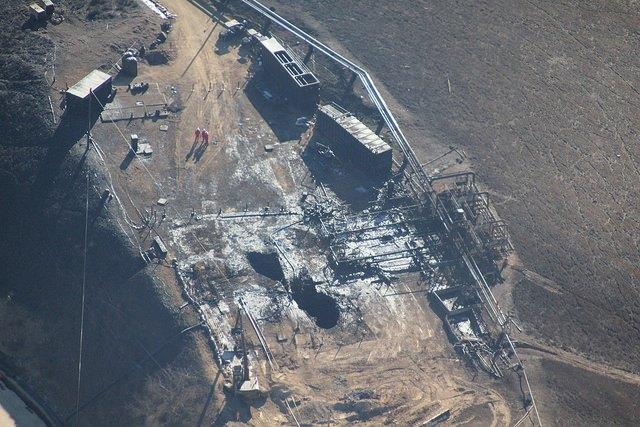

It's been a nerve-wracking week for residents of Southern California's exclusive Porter Ranch community. On Monday, after state officials confirmed that the methane gas leak that forced some 10,000 residents to move out of their homes was now fixed, homeowners began the difficult process of moving back to Porter Ranch. Many, however, have expressed deep concern that the natural gas wells just outside their community haven't been maintained and are unsafe.
"I am very terrified to go home,” one homeowner told a California state assembly committee on Monday.
Hearing that concern, this week the Assembly Utilities and Commerce Committee took the first of several steps to ensure that the 115 wells at the Aliso Canyon natural gas facility would not be reopened until the state was satisfied that they were safe. In a 13-0 vote, the panel moved to extend a moratorium on the operation of the Aliso Canyon facility.
In January, state Sen. Fran Pavley (D-Agoura Hills) proposed a bill to close the wells until "a rigorous safety review of all wells" could be conducted. SB 380 received wide support from residents, some of whom were calling for the facility to be closed altogether.
On Monday, Pavley agreed to amend the conditions of the closure so that those wells that pass review can be reopened.
At the heart of the issue Monday was the question of what impact the potential closure of Southern California Gas' 3,600-acre facility might have on the state's power grid. SoCal Gas has operated the facility since the 1970s. It considers the wells to be an important part of its power supply for California electricity plants and says that if the facility were to be shut down, supply would have to be shipped in to California. In a Jan. 20 San Diego Tribune opinion piece, SoCal Gas' senior vice president of gas operations and systems integrity, Jimmie I. Cho, said the Aliso Canyon is the "backbone" of the company's regional supply network. Cho is also a senior vice president of San Diego Gas and Electric.
"SoCal Gas has operated the Aliso Canyon facility safely and reliably since the facility was opened in 1972," Cho said.
Well, sort of.
An LA Weekly article on the leak in December notes that the reason the company had such a difficult time stopping the leak was because, according to two former SoCal Gas employees, the safety valve had been removed from the well in 1979 because it had not been working properly. And the leaking valve hadn't been replaced, SoCal Gas' vice president of customer solutions, Rodger Schwecke, told LA Weekly, because regulations exempted it from having to be replaced.
"If SS-25 were a 'critical' well — that is, one within 100 feet of a road or a park, or within 300 feet of a home — then a safety valve would be required. But it was not a critical well, so it was not required," the Weekly explained.
Which is what led to the State Assembly's consideration of an urgent moratorium and "rigorous safety review" of Aliso Canyon's 115 wells, and why natural gas storage is now a front-and-center debate in more states than just California.
Meanwhile, the fall out from what has been termed by environmental groups as "the worst environmental disaster since the BP Oil Spill" is far from over. Lawyers have been lining up to represent residents, businesses and others affected by the spill; homeowners are eyeing the prospect of returning to a series of gated communities that lie at the southern edge of Aliso Canyon, and guestimates are still being averaged as to the long-term impact of a methane leak that hasn't been quantified.
"What if the chemicals which spewed unabated into the atmosphere for so long have settled into porous materials like carpet and upholstery? What about the exteriors of houses and vehicles that are now speckled with oil and tar? What about pets that were outside during this period? What will be the impact on lawns and other plant life?," asks environmental attorney Bradford Gilde. Gilde is best known for a landmark suit against a hydraulic fracturing drilling company in Texas. "How do you accurately assess and clean up all these types of damage? And what happens if a good rain causes these chemicals to seep into the area’s groundwater and, eventually, the municipal water supply?"
As to quantifying the amount of methane that actually dispersed into the air during the four-month-long leak, SoCal Gas isn't sure it can tell. The company is apparently fighting regulations that would require it to report how much methane has leaked into the atmosphere. The company told the Public Utilities Commission in a filing last week that it did not agree with new regulations that would require SoCal and its sister companies to report methane and other gas leaks due to "catastrophic failure."
"In the event of catastrophic pipeline failures, the Joint Utilities are not aware of any established methodology that could be used to determine the release of methane and/or carbon dioxide (in the case of combustion). These types of events require specialized consideration and collaboration with various regulatory agencies to estimate the volume of emissions for potential inclusion in the greenhouse gas inventory for the state," the commission said.
Plus, being required to report the emissions under a separate category for catastrophic events, said the utilities, "on isolated events stands to distract from that intent, and could lead to reporting of emissions that are outside of the scope of SB1371 [California's natural gas leakage abatement legislation]."
To the residents of Porter Ranch, however, extraneous data that gets caught up in determining how much methane may have affected the property values or the safety of their homes is probably of little concern. Ensuring another catastrophic failure does not occur at the 40-year-old Aliso Canyon storage facility will probably be a much bigger issue on the minds of these SoCal Gas consumers.
Image credit: Earthworks
Malheur Redux: Ted Cruz Channels the Bundys, New Indictment Coming
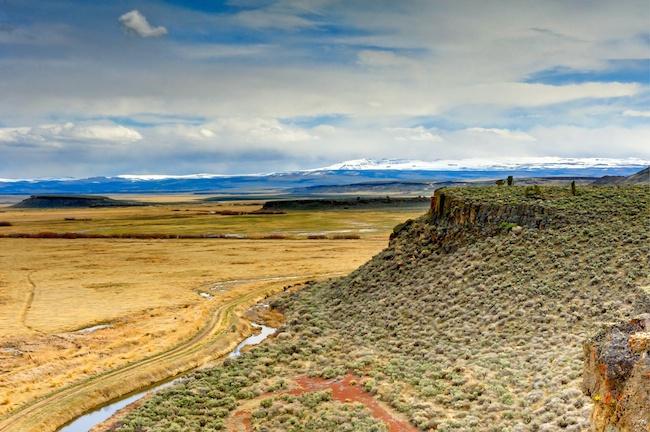

The armed takeover of the Malheur National Wildlife Refuge in Oregon continues to resonate long after ringleader Ammon Bundy and most of his active supporters were arrested and jailed. In the latest development, U.S. Sen. Ted Cruz (R-Texas) rolled out a new video ad for his presidential campaign, in which he endorses the same ALEC-inspired land privatization agenda popularized by Ammon and his father, Nevada rancher and longtime scofflaw Cliven Bundy.
The elder Bundy is also now behind bars, facing a laundry list of serious federal charges relating to a 2014 incident in Nevada, and according to news reports more indictments are on the way, along with additional arrests. So, why would a presidential candidate want to touch this very hot potato?
Ted Cruz and Cliven Bundy
Sen. Cruz has ties to ALEC (the American Legislative Exchange Council, a powerful lobbying group) and other organizations in the Koch lobbying network, and he has been a staunch supporter of the ALEC privatization stance. However, like other mainstream politicians he rides with the herd when it comes to ALEC's de facto spokesperson Cliven Bundy.
During the 2014 incident, Bundy called upon a gang of armed thugs to ward off federal agents who had come to chase his cattle off public lands, enjoying the vociferous support of Cruz and other leading Republicans. That support universally withered as Bundy's racist views became more widely known.
Our friends over at The Atlantic assembled a rundown of some of those leaders who changed their minds, and here are Sen. Cruz's statements about Cliven Bundy as events unfolded in 2014:
What he said then: On Tuesday, Ted Cruz called the Bundy standoff the "the unfortunate and tragic culmination of the path that President Obama has set the federal government on.” He added that the reason he believed the story was "resonating" was that the Obama administration has put American liberty "under assault ... We have seen our constitutional liberties eroded under the Obama administration."What he's saying now: In an email to Mediaite, Cruz's Press Secretary Catherine Frazier said of Bundy's remarks, "Those comments are completely unacceptable.”
Cruz distanced himself from Bundy, but not from the ALEC credo. He soon doubled-down on his support for transitioning federal lands out of federal control. In July 2014, he introduced an onerous land privatization amendment to a bipartisan recreation bill, prohibiting the federal government from owning more than 50 percent of the land in any single state. Cruz's amendment would have required land above the 50 percent mark to be sold at auction or transferred to the state.
Ted Cruz and Ammon Bundy
By the time Ammon and his brother Ryan blundered into the Malheur Refuge, Republican leadership had already absorbed lessons learned from the negative publicity revolving around Cliven Bundy. High-profile Republicans hesitated to criticize the Malheur takeover at first, but they soon piled on with explicit criticism once it became clear that Ammon's gang consisted of out-of-staters whose actions were not welcome by local ranchers and other community stakeholders.
Cruz also hopped on the anti-Ammon bandwagon with this statement, as reported by NBC News:
"Every one of us has a constitutional right to protest, to speak our minds ... But we don't have a constitutional right to use force and violence and to threaten force and violence on others ..."
Fallout from the Malheur takeover
Republican leaders were wise to bail on Ammon as quickly as they did. As the occupation dragged on, Ammon and his gang of thugs revealed themselves to be, well, genuine thugs facing serious criminal charges. Nobody in mainstream politics would touch that with a ten-foot pole, with the notable exception of Nevada Assemblywoman Michele Fiore.
Ammon's relentless ham-handedness also precipitated the arrest of Cliven, who flew to Oregon after Ammon released a jailhouse video pleading for supporters to visit him and his cohorts.
Cliven Bundy had never been called to account for his actions in 2014, and his choice of air travel provided federal agents with their first opportunity to arrest him, unarmed and without a gang of supporters, far from the safety of his Nevada ranch.
We bring this up because the U.S. Attorney's Office for the District of Nevada indicted Cliven Bundy last week on charges that could keep him behind bars for the rest of his life, including:
... one count of conspiracy to impede or injure a federal officer, four counts of using and carrying a firearm in relation to a crime of violence, two counts of assault on a federal officer, two counts of threatening a federal law enforcement officer, three counts of obstruction of the due administration of justice, two counts of interference with interstate commerce by extortion, and one count of interstate travel in aid of extortion.
Ted Cruz's Cliven Bundy ad
This finally brings us around to Sen. Cruz's new campaign ad. In the aftermath of the Cliven Bundy indictment, it would seem counter-intuitive to attract support to one's presidential campaign by drawing attention to a known scofflaw who is now facing serious criminal charges, especially one who has been denied bail as a flight risk.
Nevertheless, Sen. Cruz's campaign went with it.
Released to coincide with the Republican primary caucuses in Nevada, Sen. Cruz's ad evokes both Ammon and Cliven Bundy by highlighting two images. One is of a silver-haired man dressed like a rancher with the same build and sartorial style as Ammon, and in the same 60-ish age range as Cliven. The other image depicts a cowboy on horseback with a herd of cattle.
You can find Senator Cruz's new campaign ad online, in a report by Think Progress. Do watch the whole thing for the complete effect (it's only 30 seconds), but for those of you on the go here's our transcript of the ad in full, narrated by Sen. Cruz:
"Eighty-five percent of Nevada is owned and regulated by the federal government. And Donald Trump wants to keep big government in charge. That’s ridiculous.You, the people of Nevada, not Washington bureaucrats, should be in charge of your own land.
If you trust me with your vote, I will fight day and night to return full control of Nevada’s lands to its rightful owners: its citizens.
Count on it."
Backlash for the Bundys -- and Ted Cruz
To be fair, Sen. Cruz is not the only Republican presidential candidate trying to appeal to Nevada voters through the land ownership issue, apparently in response to frontrunner Donald Trump's support for the idea that the public has an interest in federal land ownership. However, Cruz stands out because he is the only contender to reinforce his argument with visual imagery that strongly evokes both Ammon and Cliven Bundy.
That's quite a high-risk gamble, considering that the Bundys -- and the whole land privatization push -- are probably not held in high esteem by mainstream Nevada voters (perhaps evidenced by Trump's defeat of Cruz in Nevada by more than 20 percentage points). It's also safe to assume that the folks behind ALEC are not too happy with the fact that the Bundys have exposed the organization's "states rights" lobbying agenda for what it is -- a land grab to benefit private interests.
Those interests include the Koch brothers, who are major funders of ALEC. The family company, Koch Industries, happens to be interested in logging, mining and ranching -- the same interests that Ammon Bundy has loudly proclaimed to support.
To hammer home the connection between the Malheur takeover and Ted Cruz, last week Ammon Bundy's legal team linked to the Cruz ad through Facebook with this observation:
"... For better or worse, you have to give props to the refuge protesters and cowboy campers forcing the presidential candidates to put these previously ignored issues to the forefront. You don't have to agree with their speech, their constitutional analysis, or their tactics, but you have to admit they are getting results politically without city riots and destroying neighborhood businesses."
For fans of Blazing Saddles the "cowboy campers" reference is a wee bit hilarious, but more to the point, the thinly veiled racism ("city riots" -- really?) certainly doesn't help Cruz among mainstream voters.
The fact is that the fallout from Malheur is continuing to fall. Earlier this week, The Oregonian reported that prosecutors are preparing a new indictment involving more charges and more defendants, based on papers filed last Friday by a federal public defender. Apparently the hammers will fall some time next week.
This all puts Sen. Cruz in a rather awkward position, given his track record of support from ALEC and the Koch brothers, including support from the oil and gas fracking industry.
On the other hand, Cruz has amassed quite a reputation for making enemies out of his allies on the Republican roster, so perhaps the senator's damn-the-torpedoes pursuit of the Bundy endorsement is just more of the same.
Recent developments bear that out. According to a report at Daily Kos, the Koch brothers have dispatched a top adviser to assist Marco Rubio, who seems on track to sail past Sen. Cruz in the race to catch up to Trump.
Photo: "A view of the Steens Mountains from the Buena Vista Overlook located in the Malheur National Wildlife Refuge" via Oregon DOT, flickr.com.
Uber Refuses to Increase Safety Measures in Wake of Kalamazoo Tragedy


Uber has once again found itself thrown into a public-relations crisis after news reports alleged that accused murderer Jason Dalton picked up fares as a driver for the ridesharing service between shootings that killed six people on Saturday in Kalamazoo, Michigan.
The company’s chief security officer issued a brief statement over the weekend saying that Uber is “horrified and heartbroken” over the violence. Nevertheless, Uber has again found itself on the defensive as critics say the company, which some suggest has a valuation as high as $70 billion, could do more to assure the safety of riders who have in greater frequency come to rely on the service as their main source for transportation.
While Dalton has no criminal record, Uber’s detractors point out that the company has long resisted fingerprinting its drivers. In fact, when the city council of Austin, Texas, voted to launch a program in which ridesharing service drivers could voluntarily register their fingerprints with a third-party registration service, Uber (and its main competitor, Lyft) threatened to leave the state’s fourth largest city. The company has reportedly tested some pilot fingerprinting programs, but it's still steadfast in its refusal to make it a company-wide policy.
Here in the U.S., the requirements for becoming a driver on Uber are fairly basic. Drivers need a driver’s license, proof of automobile insurance with a minimal liability threshold, the submission of a vehicle inspection, and disclosure of their date of birth and social security number. The benefits, according to Uber, are cost-effective rides, the highest wages in the transportation service industry and the ability for workers to be their “own boss” -- although that final point has long been a bone of contention between Uber and many of its drivers.
Could Uber be more thorough in its screening, adding a face-to-face interview along with running more comprehensive background checks? Uber’s response is that such painstaking reviews of drivers would not have screened out Dalton, who in less than one month completed over 100 trips and scored a very respectable 4.73 out of 5 from riders’ reviews.
Another frustration critics of Uber state repeatedly is the lack of a “panic” button on its smartphone app in the event anything goes awry during a ride with the service. After an Uber driver in India was accused of rape last year, the company quickly rolled out an emergency safety alert feature that allows riders to simultaneously alert Uber and local law enforcement. Uber hailed that safety measure as an example of the company’s “commitment to safety,” but the company has refused to install it in here in the U.S. A year ago Uber said it had a plan to install such a feature in Chicago after allegations of sexual assault were made against two drivers, but that plan never came to fruition.
In a conference call with reporters yesterday, an Uber spokesman said that for riders, “911 is the panic button and it’s the panic button we want people to use.”
Details about Dalton and the events of last Saturday’s Kalamazoo shootings are still unfolding, and it is not clear if all these safety measures would have prevented six people from dying and countless more from having their lives shattered. Nevertheless, this young company that is not even six years old has a long history of responding to controversy by hiding behind public-relations jargon with the occasional token philanthropic project.
Hence the company that some say has killed the sharing economy once it became mainstream has reached a turning point. If it is ever going to repair its already dented reputation, Uber has to do and say more than merely insist that nothing could have prevented this tragedy.
Image credits: Wiki Commons (Mxobe)